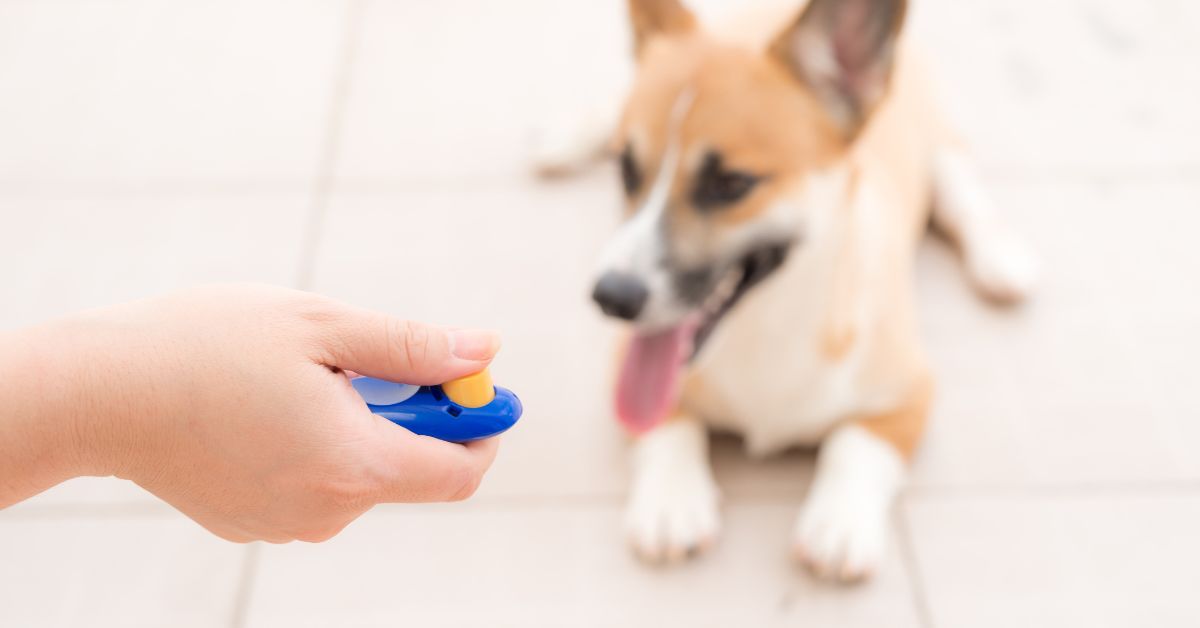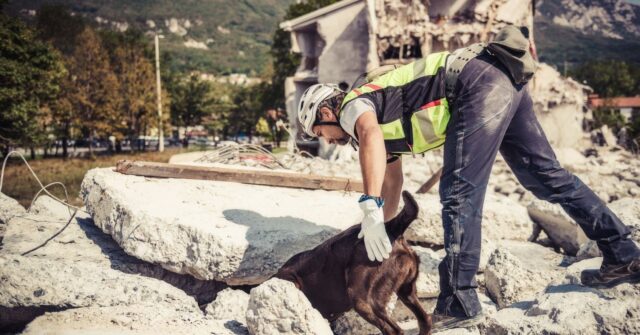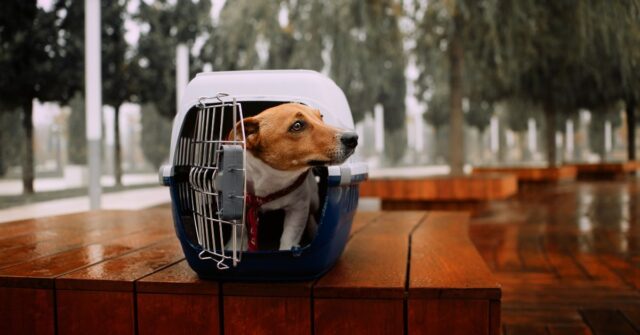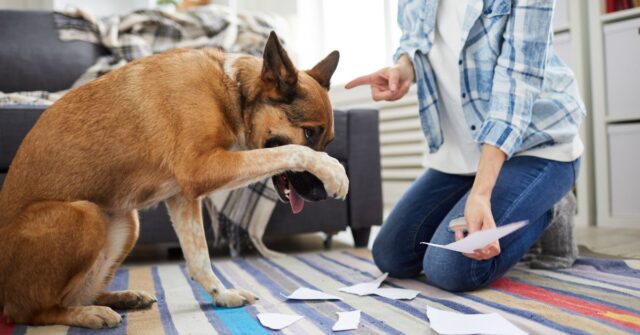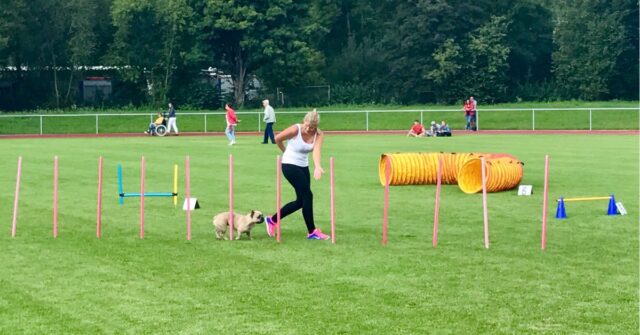Clicker training is a proven, humane training method that uses positive reinforcement to shape your dog’s behaviour effectively.
By pairing a distinctive click sound with a reward, you mark desirable actions precisely when they occur.
This method helps your dog understand exactly what you want and encourages them to repeat the behaviour consistently.
It’s a technique suitable for dogs of all ages and breeds, helping strengthen the bond between you and your furry companion while creating a fun, learning environment.
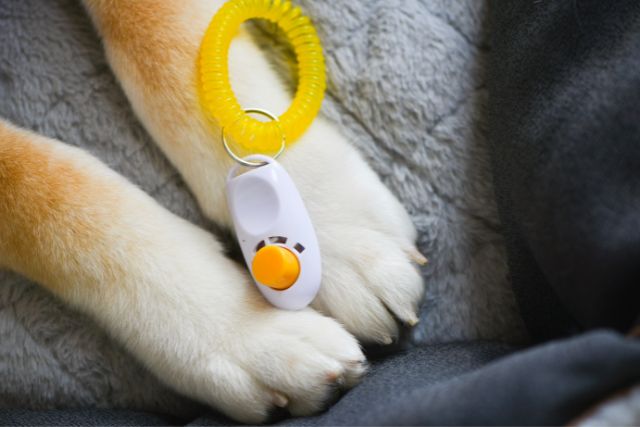
Understanding the Basics of Clicker Training
Clicker training is a method that relies on positive reinforcement, using a small handheld device that emits a distinctive ‘click’ sound.
This sound marks the exact moment a dog performs a desired behaviour. The click is always followed by a treat or reward, helping dogs associate the action with positive outcomes.
Think of it like a snapshot that captures good behaviour at the moment, making it easier for your pup to understand what they’re doing right.
What Is Clicker Training?
Clicker training involves using a clicker to make a quick noise each time a desired behaviour is performed.
This technique is based on the science of conditioning, where dogs are rewarded to reinforce good behaviour.
The click is clear, distinct, and consistent, which eliminates confusion and lets dogs learn quickly and happily.
The Science Behind Positive Reinforcement
Positive reinforcement works by rewarding actions you want to see more of. By marking these behaviours with the clicker, you give your dog a clear signal of what they did right.
It’s akin to giving your dog a thumbs-up. With repeated clicks and treats, the behaviour becomes a habit, making training more efficient and enjoyable for both of you.
The Benefits of Clicker Training
The clicker offers precision, helping dogs quickly identify the behaviour being rewarded. It makes training sessions engaging and fun, motivating dogs to keep learning.
Over time, dogs trained with clickers tend to love learning and perform commands more consistently because they associate training with treats and praise.
Essential Tools for Clicker Training
For successful clicker training, having the right gear is crucial. Let’s take a look at the tools you’ll need to get started.
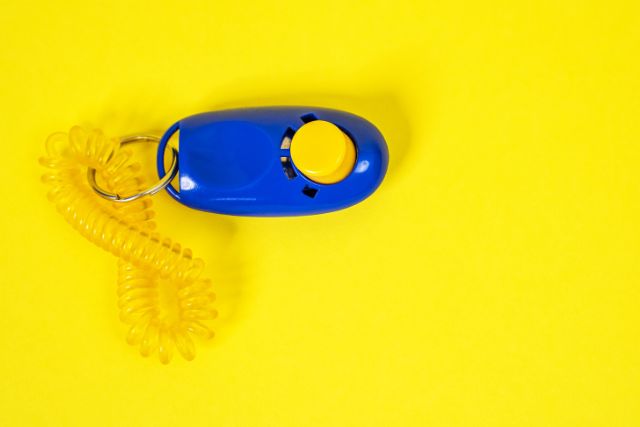
Choosing the Right Clicker
The clicker is the cornerstone of this method. It’s a small device that makes a clear, sharp sound when pressed.
Make sure the clicker is comfortable to hold and produces a distinct click that stands out amid everyday noises. Some come with wristbands for convenience.
High-Value Treats and Treat Bags
Treats are key to positive reinforcement training. Choose small, tasty treats your dog loves.
Keep them easily accessible with a treat pouch attached to your belt, so you can reward your pup swiftly and consistently.
Target Sticks and Training Mats
Target sticks help guide your dog’s movements, especially for teaching tricks like ‘touch.’ Training mats offer a focused learning environment, letting your dog know it’s time to get serious.
Getting Started with Clicker Training
Ready to start clicking away? Here’s how to introduce your dog to this new style of training step by step.
Teaching the Click-Reward Association
The first step is helping your dog associate the click with a treat. Click and then immediately give your pup a treat.
Repeat this 10-20 times in a row. Over a few short sessions, your dog will learn that the click means a tasty reward is coming their way!

Capturing Natural Behaviors
Watch your dog closely. Click and reward any good behaviours they offer naturally, like sitting or lying down. This helps reinforce these actions and encourages your pup to repeat them.
Lure-and-Reward Training Techniques
Lure your dog into performing a specific behaviour with a treat. Once they follow the lure, click as soon as they perform the behaviour and then offer the treat.
With repetition, your pup will associate the action with the click and perform it even without the lure.
Shaping Behaviors Through Incremental Steps
For more complex behaviors, break the task down into smaller, achievable steps. Click and reward each small movement in the right direction.
This technique is perfect for teaching tricks or tasks that require precision.
Step-by-Step Guide to Effective Clicker Training
Here’s a comprehensive guide to the entire clicker training process.
1. Marking the Desired Behavior with a Click
Click immediately when your dog performs the desired behaviour. This precise timing helps them identify what action you’re rewarding.
2. Rewarding with Treats and Praise
Follow the click with a treat or reward. Make sure the treat is something your pup really loves!
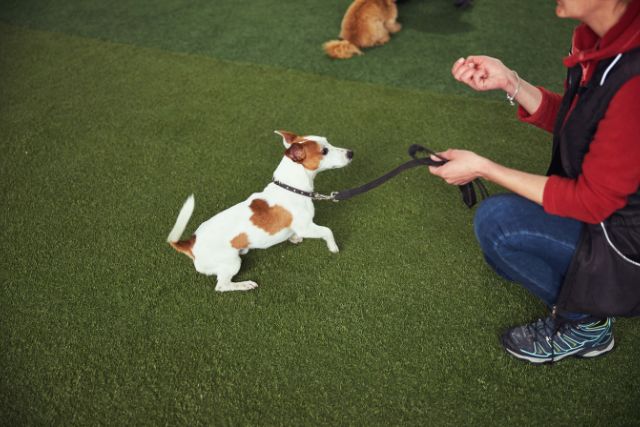
3. Repeating the Process for Consistency
Practice makes perfect. Repetition will help reinforce the behaviour and make it second nature for your dog.
4. Adding Verbal Cues
Once your dog consistently performs the desired action, introduce a verbal cue like ‘sit.’ Eventually, your dog will respond to the cue without needing the clicker.
5. Fading Out the Clicker Gradually
As your dog becomes proficient, start using the clicker less frequently. Your verbal cues and occasional rewards will keep your dog motivated.
Overcoming Challenges in Clicker Training
Clicker training isn’t always smooth sailing. Here are some common challenges and how to tackle them.
Low Food Motivation or Distracted Dogs
If your dog isn’t motivated by treats, use other rewards like toys or games. For easily distracted dogs, practice in a quiet environment first, gradually adding distractions.
Training Sessions with Multiple Pets
Training multiple dogs simultaneously? Train them separately first. Once each dog understands the basics, you can bring them together and use different verbal cues for each one.
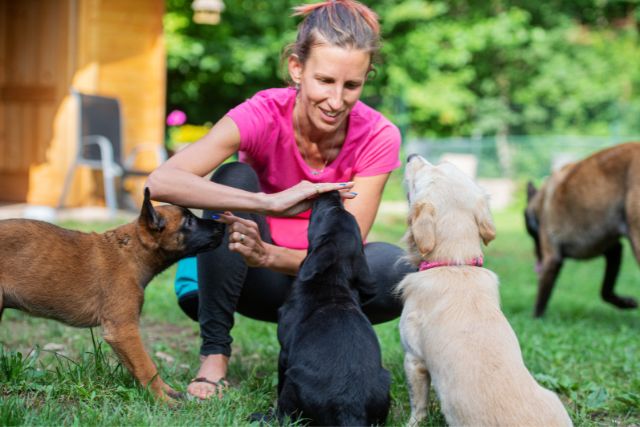
Maintaining Patience and Consistency
Training can take time, so stay patient. Celebrate small wins and remain consistent in your cues and rewards. Your perseverance will pay off in the end!
Advanced Clicker Training Techniques
Once your dog has the basics down, you can challenge them with more advanced tasks.
Training Complex Behaviors with Precision
Teach tricks like rolling over or fetching specific items by breaking them into smaller steps. Click and reward each step to guide your dog towards the final behaviour.
Incorporating Clicker Training into Everyday Activities
Use clicker training in your dog’s daily life, like clicking when they sit before crossing the street or lying down calmly while you have coffee. This makes good behaviour a consistent habit.
Conclusion: Creating a Positive Learning Environment
Clicker training is an enjoyable, effective way to communicate with your dog. The clicker provides clear, consistent feedback, making learning easy and fun for dogs of all ages and breeds.
By using positive reinforcement, you’re helping your dog understand good behaviour while strengthening your bond. Keep clicking, and watch your pup flourish!

